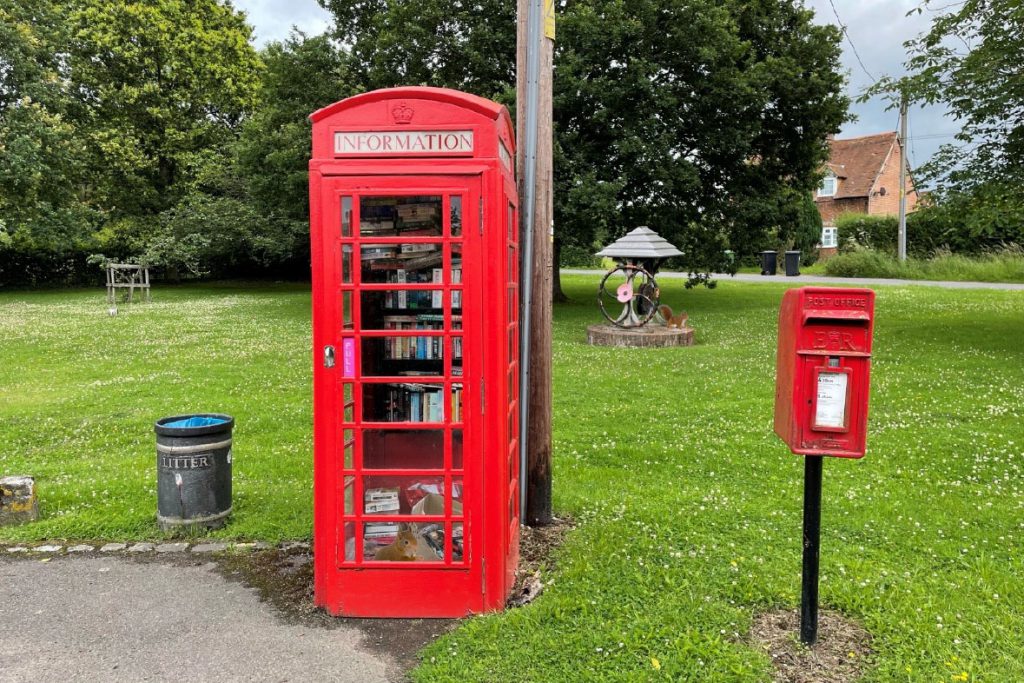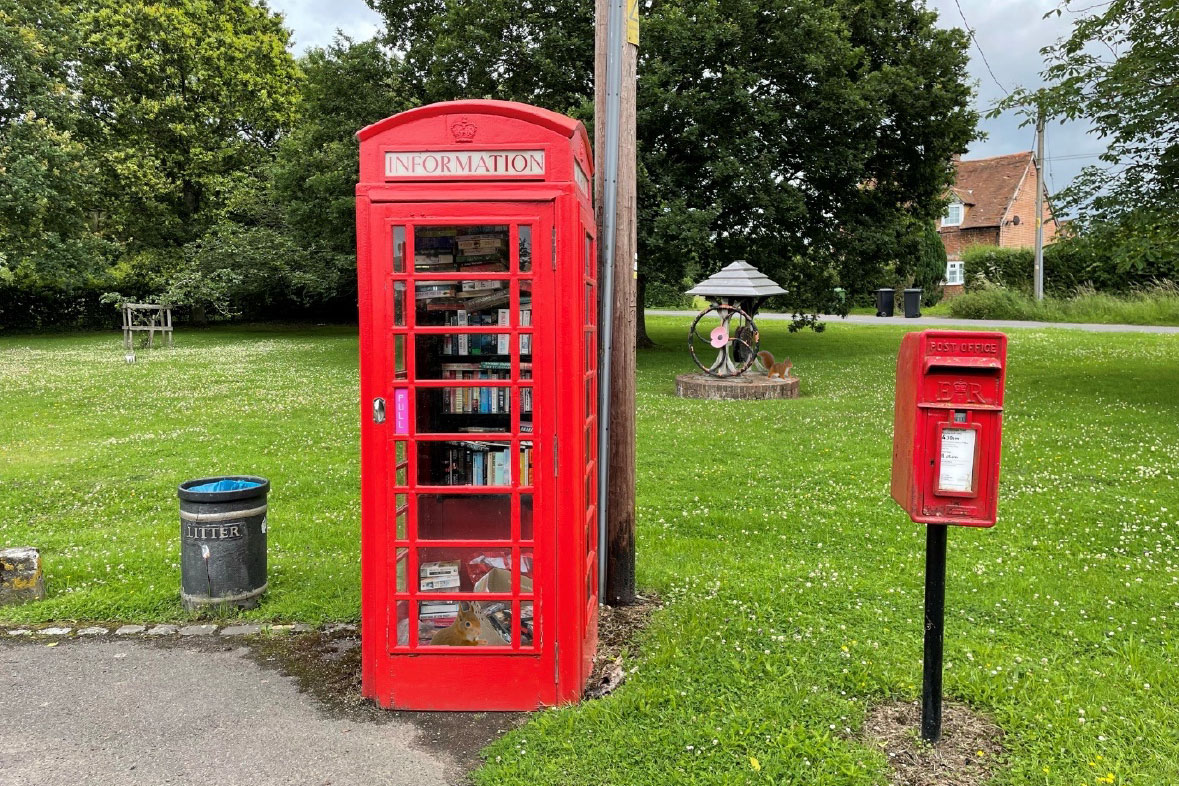
I was out cycling a few weeks ago, and I spotted a scene that I snapped on my phone (who carries cameras these days?) There was something about it that I found interesting, and I couldn’t quite put my finger on it. Perhaps I was suffering from lack of oxygen to the brain at the time, in my never-ending quest to stave off the effects of a love of food!
It hit me when I got home. The picture explains information management in an easy to remember way… but brings up some interesting points.
The telephone box is an information store (it used to be for making phone calls, but that’s not needed now that everybody carries a phone). So, this obsolete technology has been repurposed and re-labelled (Information at the top) – and is used as a physical information store.
Within the store there is some order – the high value books have been placed on shelves, with the titles facing outwards for easy access. Some new books have been dumped in a box at the bottom to be sorted (presumably) by the Information Manager – or dealt with when considered important.
There’s a simple user interface and instruction – PULL.
The information within – that has been sorted – is easily accessible.
So, stretching the analogy a little further:
To the right is the mail box. Let’s say that represents the ability to share beyond the boundaries of the information store.
To the left is the short-term archival and disposal mechanism – the litter bin. Stuff can be put there, and may be collected and disposed of, but there’s still a way to retrieve it if it shouldn’t have gone there.
On the road at the back are the wheely bins – the final disposal of any of the information.
At a further stretch, we’ve got the wishing well which represents the desires of the users and managers desire for what information management should be like. It probably also contains the Information Manager’s desire to be recognized, not just as a cost centre, but as a group capable of value creation and improved efficiency throughout the organisation.
Finally- I’m really reaching now – the fenced of tree is the ‘tree of knowledge’. It’s fenced off because we see so many organisations failing to leverage their knowledge as effectively as they could!
And in the very back are the huge green bins for irretrievable information destruction.
Can you think of anything else in there?
If we think of this in terms of the DAMA-DMBOK (Data Management Body of Knowledge):
- Data is an Asset – at least the books are safe and dry.
- Data Governance – the books are available and the policies and procedures to ensure books are added here are being adhered to because there is not a pile outside the telephone box.
- Data Quality – only published and final books in this store… we can assume that they are of reasonable quality (unlike many network drives, SharePoint sites and document stores).
- Data Architecture – effective management is possible but not ideal. Store the high value books on the higher shelves, with titles facing out.
- Data Modeling and Design – this is flexible design but appears to be reaching its limits as most of the shelves are full and overflowing.
- Metadata Management – plenty of metadata in the form of book titles, authors, ISBN numbers and publication dates, but no way to share it outside of the store … no wonder I was a little perturbed.
- Data Security and Privacy – in this case the security has been considered and the store is purposefully open.
- Data Integration and Operability – let’s say that the post box and telephone lines give us that element of the principles.
- Master Data Management – nothing to see here.
Still not a bad representation.
Go back and look at the picture. Is there anything I missed?

